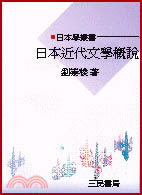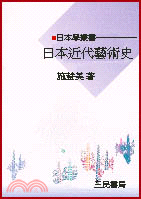定價
:NT$ 5218 元優惠價
:90 折 4696 元
若需訂購本書,請電洽客服 02-25006600[分機130、131]。
相關商品
商品簡介
作者簡介
目次
商品簡介
This book arrives at just the right time to facilitate understanding of performance-based fire risk assessment in buildings – an integral part of the global shift in policy away from traditional prescriptive codes.
Yung, an internationally recognised expert on the subject of fire risk assessment, introduces the basic principles and techniques that help the reader to understand the various methodologies that are currently in place or being proposed by different organisations. Through his illustration of basic principles and techniques he enables the reader to conduct their own fire risk assessments. He demonstrates how the probabilities of fire scenarios are assessed based on the probabilities of success and failure of fire protection measures that are in place. He also shows how the consequences of fire scenarios are assessed based on the intensity and speed of fire and smoke spread, the probability and speed of occupant response and evacuation, and the effectiveness and speed of fire department response and rescue efforts.
Yung’s clear and practical approach to this highly topical subject enables the reader to integrate the various tools available into a quantitative framework that can be used for decision making. He brings an invaluable resource to all those involved in fire engineering and risk assessment, including students, academics, building designers, fire protection engineers, structural engineers, regulators and risk analysts.
Yung, an internationally recognised expert on the subject of fire risk assessment, introduces the basic principles and techniques that help the reader to understand the various methodologies that are currently in place or being proposed by different organisations. Through his illustration of basic principles and techniques he enables the reader to conduct their own fire risk assessments. He demonstrates how the probabilities of fire scenarios are assessed based on the probabilities of success and failure of fire protection measures that are in place. He also shows how the consequences of fire scenarios are assessed based on the intensity and speed of fire and smoke spread, the probability and speed of occupant response and evacuation, and the effectiveness and speed of fire department response and rescue efforts.
Yung’s clear and practical approach to this highly topical subject enables the reader to integrate the various tools available into a quantitative framework that can be used for decision making. He brings an invaluable resource to all those involved in fire engineering and risk assessment, including students, academics, building designers, fire protection engineers, structural engineers, regulators and risk analysts.
作者簡介
The author is currently the President of his own consulting company, Yung & Associates Inc. He has worked in fire research and fire risk assessment for over 20 years. From 2002 to 2006, he was Research Leader of Fire Science at the Australian national research organization CSIRO in Sydney, Australia. Before that, he was a Senior Research Officer and Group Leader of Fire Risk Assessment for 17 years at the National Research Council Canada (NRCC) in Ottawa. He led a team that developed one of the world’s comprehensive fire risk-cost assessment models, called FiRECAM. Before joining the fire research group at NRCC in 1985, he spent seven years at the Argonne National Laboratory in the USA, and three years at the Chalk River Nuclear Laboratory and NRCC, conducting nuclear and solar energy research.
The author's work is mentioned in the book History of Fire Protection Engineering, published in 2003 by the National Fire Protection Association (NFPA) and the Society of Fire Protection Engineers (SFPE) in the USA. He is a member of the NFPA Technical Committee on Fire Risk Assessment Methods. In September 2003, he was given the 'Hats Off' award by SFPE for his service as the Editor-in-Chief of the Journal of Fire Protection Engineering. In May 2001, he was elected a Fellow of the SFPE for his achievement in fire protection engineering. He has over 100 publications in fire, nuclear and solar energy, and desalination and water purification. He serves on the editorial boards of three major international fire journals and is the past Editor-in-Chief of the Journal of Fire Protection Engineering.
He holds a B.Eng. from McGill University, an M.A.Sc. from the University of Toronto, and a Ph.D. from MIT, all in mechanical engineering. In addition, he is a licensed professional engineer in the Province of Ontario, Canada and a member of the American Society of Mechanical Engineers.
The author's work is mentioned in the book History of Fire Protection Engineering, published in 2003 by the National Fire Protection Association (NFPA) and the Society of Fire Protection Engineers (SFPE) in the USA. He is a member of the NFPA Technical Committee on Fire Risk Assessment Methods. In September 2003, he was given the 'Hats Off' award by SFPE for his service as the Editor-in-Chief of the Journal of Fire Protection Engineering. In May 2001, he was elected a Fellow of the SFPE for his achievement in fire protection engineering. He has over 100 publications in fire, nuclear and solar energy, and desalination and water purification. He serves on the editorial boards of three major international fire journals and is the past Editor-in-Chief of the Journal of Fire Protection Engineering.
He holds a B.Eng. from McGill University, an M.A.Sc. from the University of Toronto, and a Ph.D. from MIT, all in mechanical engineering. In addition, he is a licensed professional engineer in the Province of Ontario, Canada and a member of the American Society of Mechanical Engineers.
目次
About the Author.
Preface.
Acknowledgements.
List of Symbols.
1. Introduction.
PART I: SIMPLE APPROACH TO FIRE RISK ASSESSMENT.
2. What is Fire Risk Assessment?
2.1 Overview.
2.2 What is Fire Risk Assessment?
2.3 Summary.
2.4 Review Questions.
2.5 References.
3. Fire Risk Assessment Based on Past Fire Experience.
3.1 Overview.
3.2 Based on Past Fire Experience.
3.3 Based on Fire Incident Data.
3.4 Summary.
3.5 Review Questions.
3.6 References.
4. Qualitative Fire Risk Assessment.
4.1 Overview.
4.2 Risk Matrix.
4.3 Checklist Method.
4.4 Event-Tree Method.
4.5 Summary.
4.6 Review Questions.
4.7 References.
5. Quantitative Fire Risk Assessment.
5.1 Overview.
5.2 Risk Indexing.
5.3 Checklist Method.
5.4 Event-Tree Method.
5.5 Summary.
5.6 Review Questions.
5.7 References.
PART II: FUNDAMENTAL APPROACH TO FIRE RISK ASSESSMENT.
6. Fundamental Approach to Fire Risk Assessment.
7. Fire Growth Scenarios.
7.1 Overview.
7.2 Compartment Fire Characteristics.
7.3 Fire Model Input and Output Parameters.
7.4 Design Fires.
7.5 Automatic Fire Suppression to Control Fire Growth.
7.6 Summary.
7.7 Review Questions.
7.8 References.
8. Fire Spread Probabilities.
8.1 Overview.
8.2 Fire Resistant Construction.
8.3 Probability of Failure.
8.4 Fire Spread Probabilities.
8.5 Summary.
8.6 Review Questions.
8.7 References.
9. Smoke Spread Scenarios.
9.1 Overview.
9.2 Smoke Spread Characteristics and Modelling.
9.3 Smoke Control Systems to Clear Smoke in Evacuation Routes.
9.4 Summary.
9.5 Review Questions.
9.6 References.
10. Occupant Evacuation Scenarios.
10.1 Overview.
10.2 Occupant Evacuation Characteristics and Modelling.
10.3 Occupant Safety Measures to Expedite Occupant Response and Evacuation.
10.4 Summary.
10.5 Review Questions.
10.6 References.
11. Fire Department Response.
11.1 Overview.
11.2 Fire Department Response Time and Resources.
11.3 Occupant Fatality and Property Loss Modelling.
11.4 Fire Protection Measures to Provide Effective Occupant Rescue and Fire Extinguishment Efforts.
11.5 Summary.
11.6 Review Questions.
11.7 References.
12. Uncertainty Considerations.
12.1 Overview.
12.2 What Are the Uncertainties?
12.3 Treatment of Uncertainty.
12.4 Summary.
12.5 Review Questions.
12.6 References.
13. Fire Risk Management.
13.1 Overview.
13.2 Fire Risk Management.
13.3 Alternative Fire Safety Designs.
13.4 Impact of Inspection and Maintenance on System Reliability.
13.5 Impact of Evacuation Drills on Early Occupant Response and Evacuation.
13.6 Summary.
13.7 Review Questions.
13.8 References.
Index
Preface.
Acknowledgements.
List of Symbols.
1. Introduction.
PART I: SIMPLE APPROACH TO FIRE RISK ASSESSMENT.
2. What is Fire Risk Assessment?
2.1 Overview.
2.2 What is Fire Risk Assessment?
2.3 Summary.
2.4 Review Questions.
2.5 References.
3. Fire Risk Assessment Based on Past Fire Experience.
3.1 Overview.
3.2 Based on Past Fire Experience.
3.3 Based on Fire Incident Data.
3.4 Summary.
3.5 Review Questions.
3.6 References.
4. Qualitative Fire Risk Assessment.
4.1 Overview.
4.2 Risk Matrix.
4.3 Checklist Method.
4.4 Event-Tree Method.
4.5 Summary.
4.6 Review Questions.
4.7 References.
5. Quantitative Fire Risk Assessment.
5.1 Overview.
5.2 Risk Indexing.
5.3 Checklist Method.
5.4 Event-Tree Method.
5.5 Summary.
5.6 Review Questions.
5.7 References.
PART II: FUNDAMENTAL APPROACH TO FIRE RISK ASSESSMENT.
6. Fundamental Approach to Fire Risk Assessment.
7. Fire Growth Scenarios.
7.1 Overview.
7.2 Compartment Fire Characteristics.
7.3 Fire Model Input and Output Parameters.
7.4 Design Fires.
7.5 Automatic Fire Suppression to Control Fire Growth.
7.6 Summary.
7.7 Review Questions.
7.8 References.
8. Fire Spread Probabilities.
8.1 Overview.
8.2 Fire Resistant Construction.
8.3 Probability of Failure.
8.4 Fire Spread Probabilities.
8.5 Summary.
8.6 Review Questions.
8.7 References.
9. Smoke Spread Scenarios.
9.1 Overview.
9.2 Smoke Spread Characteristics and Modelling.
9.3 Smoke Control Systems to Clear Smoke in Evacuation Routes.
9.4 Summary.
9.5 Review Questions.
9.6 References.
10. Occupant Evacuation Scenarios.
10.1 Overview.
10.2 Occupant Evacuation Characteristics and Modelling.
10.3 Occupant Safety Measures to Expedite Occupant Response and Evacuation.
10.4 Summary.
10.5 Review Questions.
10.6 References.
11. Fire Department Response.
11.1 Overview.
11.2 Fire Department Response Time and Resources.
11.3 Occupant Fatality and Property Loss Modelling.
11.4 Fire Protection Measures to Provide Effective Occupant Rescue and Fire Extinguishment Efforts.
11.5 Summary.
11.6 Review Questions.
11.7 References.
12. Uncertainty Considerations.
12.1 Overview.
12.2 What Are the Uncertainties?
12.3 Treatment of Uncertainty.
12.4 Summary.
12.5 Review Questions.
12.6 References.
13. Fire Risk Management.
13.1 Overview.
13.2 Fire Risk Management.
13.3 Alternative Fire Safety Designs.
13.4 Impact of Inspection and Maintenance on System Reliability.
13.5 Impact of Evacuation Drills on Early Occupant Response and Evacuation.
13.6 Summary.
13.7 Review Questions.
13.8 References.
Index
主題書展
更多
主題書展
更多書展本週66折
您曾經瀏覽過的商品
購物須知
外文書商品之書封,為出版社提供之樣本。實際出貨商品,以出版社所提供之現有版本為主。部份書籍,因出版社供應狀況特殊,匯率將依實際狀況做調整。
無庫存之商品,在您完成訂單程序之後,將以空運的方式為你下單調貨。為了縮短等待的時間,建議您將外文書與其他商品分開下單,以獲得最快的取貨速度,平均調貨時間為1~2個月。
為了保護您的權益,「三民網路書店」提供會員七日商品鑑賞期(收到商品為起始日)。
若要辦理退貨,請在商品鑑賞期內寄回,且商品必須是全新狀態與完整包裝(商品、附件、發票、隨貨贈品等)否則恕不接受退貨。
























